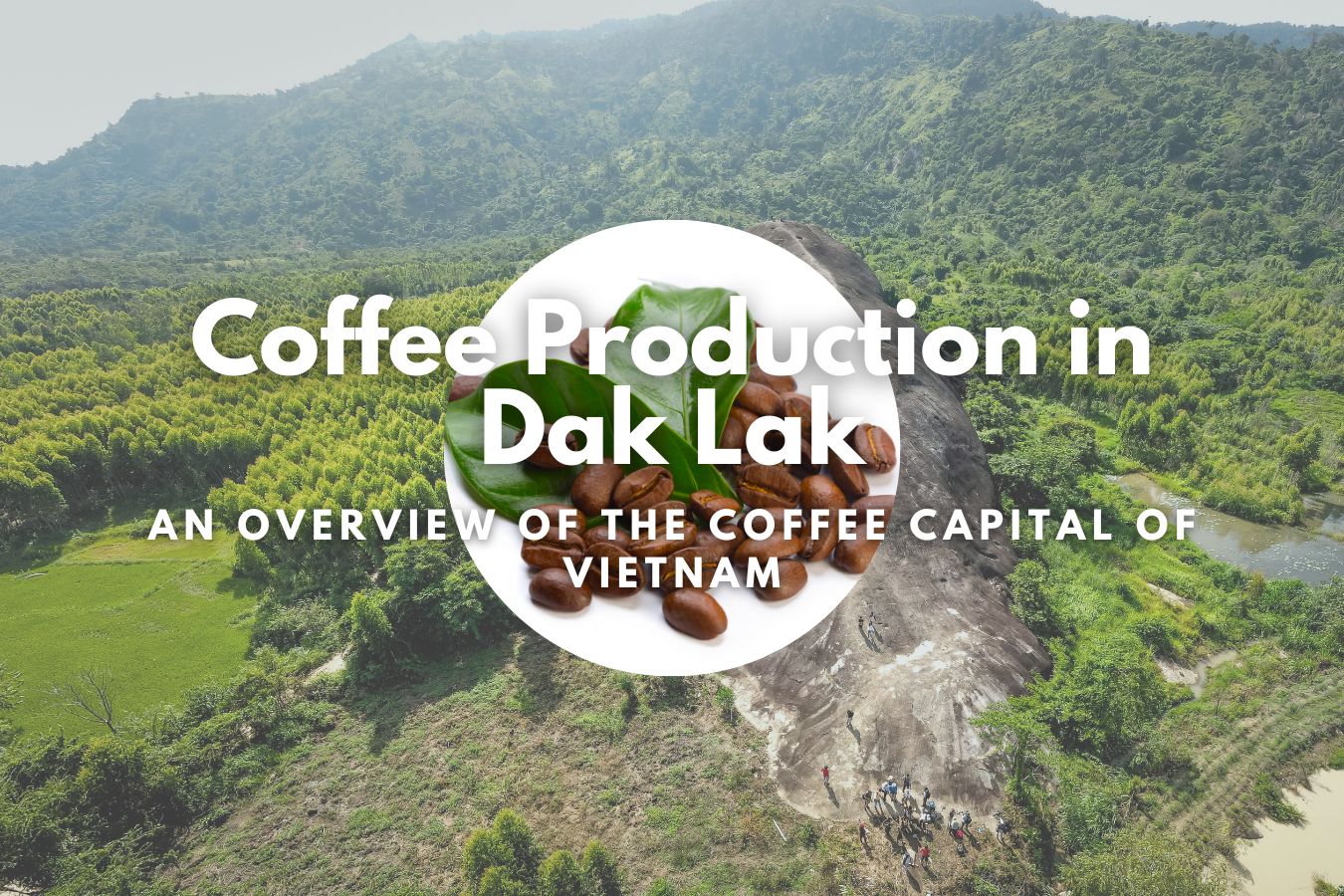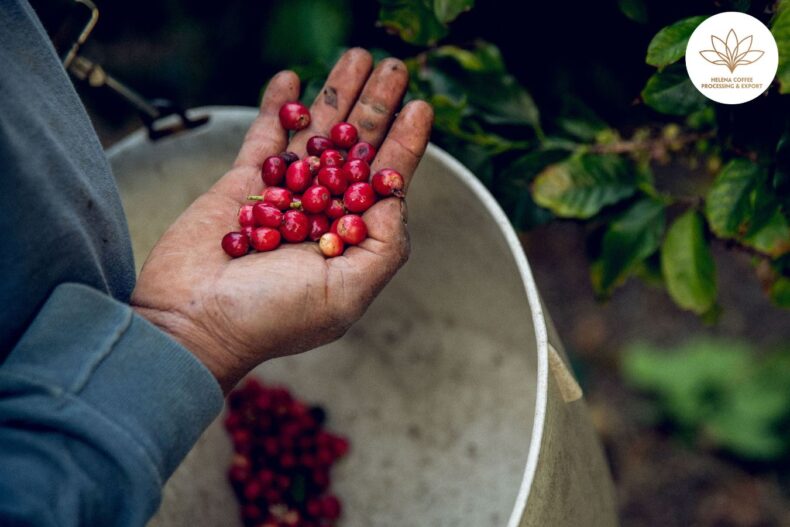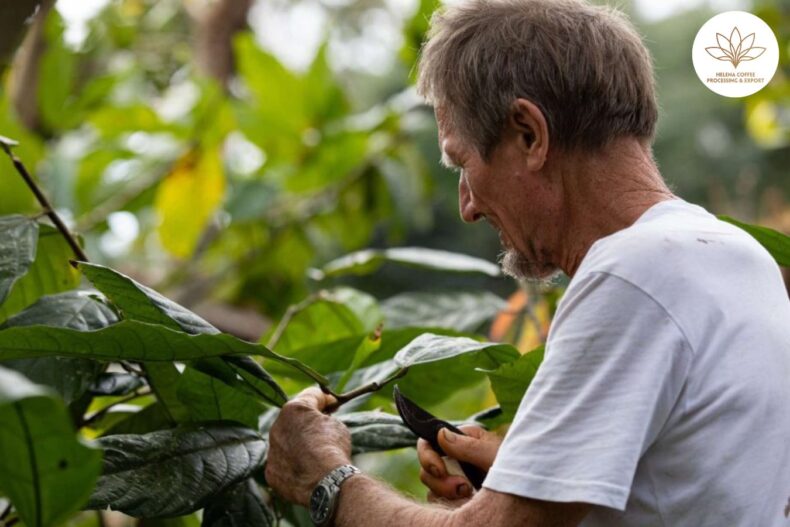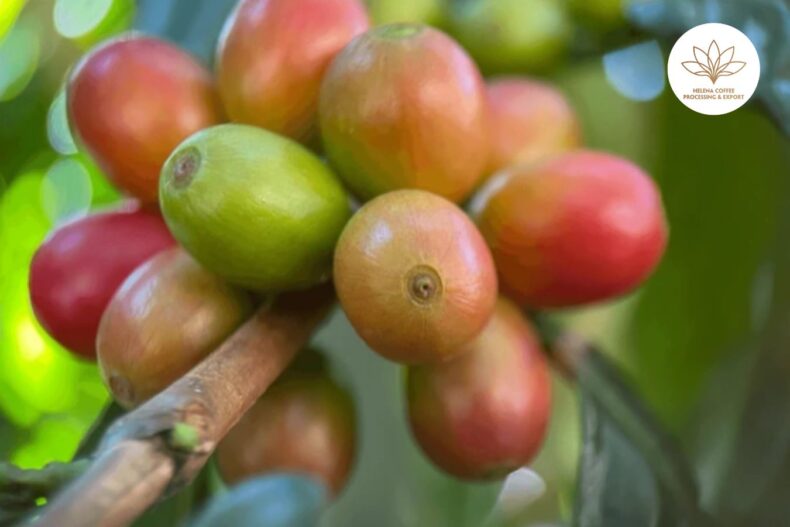
If you are a coffee lover, you must have heard of Dak Lak, the coffee capital of Vietnam. Dak Lak is a province in the Central Highlands region of Vietnam, known for its vast coffee plantations and high-quality coffee beans.
This article will provide you with an overview of coffee production in Dak Lak, including the history of coffee cultivation, the coffee varieties grown in the region, and the current state of the coffee industry.
Introduction
Dak Lak is one of the largest coffee producers in Vietnam, with over 200,000 hectares of coffee plantations. The province produces mainly two varieties of coffee beans, Robusta and Arabica.
Robusta coffee beans are more commonly made in the region, making them easier to grow and yield higher. On the other hand, Arabica coffee beans require a higher altitude to grow and have a lower yield, making them more expensive.
Coffee production in Dak Lak has a rich history that dates back to the French colonial period. During the 19th century, the French introduced coffee plants to Vietnam, and Dak Lak became one of the first provinces to start coffee production. Over the years, coffee production in Dak Lak has evolved, and the region has become known for producing high-quality coffee beans.
Geographic Location Daklak Province
Daklak province is located in the center of the Central Highlands region
- ¾ Bordering Gia Lai to the North
- ¾ The South borders Dak Nong and Lam Dong provinces
- ¾ The East borders on Phu Yen and Khanh Hoa provinces
- ¾ The West borders Dak Nong province and Cambodia

The natural area is 1,312,537 ha, including 12 districts and City. Buon Ma Thuot has over 300,000 ha of basalt-red soil
Favorable for developing perennial industrial crops such as rubber, pepper, coffee, cashew…
A system of national highways 14, 27, and 26 connects Dak Lak with Ho Chi Minh City, Khanh Hoa, Phu Yen Gia Lai to Quy Nhon Convenience for consumer goods.
History of Coffee Cultivation in Dak Lak
The history of coffee cultivation in Dak Lak dates back to the French colonial era in the early 20th century. The French brought coffee plants from Africa to Vietnam and introduced coffee cultivation to the Central Highlands region, including Dak Lak.
| No. | District | Area (ha) | Production (tons) |
|---|---|---|---|
| 13 | Krông Lăk | 1,023 | 1,800 |
| 12 | Krông Ana | 18,576 | 55,000 |
| 11 | Krông Bông | 923 | 1,350 |
| 10 | Krông Pắk | 16,194 | 41,200 |
| 9 | M’Drắk | 2,415 | 2,100 |
| 8 | Eakar | 6,137 | 7,400 |
| 7 | Cư M’gar | 33,160 | 57,500 |
| 6 | Buôn Đôn | 2,570 | 7,500 |
| 5 | Krông Búk | 36,768 | 72,700 |
| 4 | Krông Năng | 24,022 | 60,050 |
| 3 | Ea Súp | 31,116 | 16,300 |
| 2 | Ea H’leo | 18,440 | 48,600 |
| 1 | Buôn Ma Thuột | 14,241 | 24,800 |
| Total Province | 174,500 | 380,016 |
Source: Helena Coffee Vietnam
The first coffee plantation in Dak Lak was established in 1906, and since then, coffee has become one of the most important crops in the region.

Current status of coffee production in Dak Lak
Pros:
- There is a fund of red basalt soil suitable for perennial industrial plants
- In the past few years, the price of coffee in the market has continuously increased
- Time to harvest coffee, dry weather is favorable in the stage of harvesting and processing
- The province has taken many measures to support the coffee industry, such as establishing a coffee executive council, building a coffee brand in Buon Ma Thuot, and organizing a coffee festival in Buon Ma Thuot…
- The processing technology is still limited but relatively abundant. Besides coffee being processed at the household scale, there are currently 18 dry processing lines with a capacity of 198,000 T/year, 14 wet processing lines with over 52,000T/year, and over 20 businesses and individuals roasting and processing instant coffee. The total capacity of processing roasted and ground coffee is more than 2500T/year; instant coffee is 800T/year.
- Initially forming, several processing facilities with large capacities to gain a high market share in the country and participate in export.
Cons:
- Weather changes are becoming more and more complicated, hot and dry, and floods have occurred irregularly against the law for many years.
- Areas of smallholder farmers are probably fragmented
- The level of farming is still low; farmers mainly follow experience, uneven quality limits competitiveness, and is less sustainable.
- More than 80% of the coffee area is grown from seeds chosen by the people, so the garden is uneven.
- Harvesting, processing, and post-harvest preservation have not been adequately invested, while harvesting green fruits, drying on the ground, and processing by milling and stamping are still popular among the people…
- Market price movements adversely affect producers, such as rising prices of materials and fuel, affecting investment in garden care, and inefficient and unstable production…
Goals of Dak Lak Province
- By 2010 the coffee area will be stable and productive, with about 170,000 ha.
- Conduct a review of the existing coffee area, and identify potential critical regions for developing an intensive farming investment project in the spirit of Decision 3988/QD-BNN-TT dated December 26, 2006, of the Minister of Agriculture and Rural Development.
Oriented development:
• We consider coffee as the main crop in commodity production of the province, only converting the coffee acreage to other crops with specific conditions.
• Continue to convert coffee areas that do not have enough water for irrigation and coffee in sub-regions with unsuitable climates and soils. In the old coffee areas, pests need to continue to survey and assess the level of adaptation to have a reasonable conversion plan.
• Renovation and rejuvenation of orchards need to pay attention to technical measures of felling and renovating old coffee gardens with new varieties, integrating and popularizing the sustainable coffee production model under the 4C program.
Essential solutions to improve the quality and value of coffee products:
• Review the planning to develop a stable coffee area and improve the variety set, rejuvenate the orchard, prioritize investment in intensive farming to increase productivity, and enhance the quality of the orchard according to sustainable standards in all three aspects: economy – society – environment.
• Encouraging and mobilizing the conversion of coffee areas that are not eligible for coffee to grow into other crops,
• Increase investment in coffee processing, minimize the collection of green berries, prevent coffee mold and Ochratoxin A (OTA), and apply advanced agricultural techniques (GAP) in coffee production.
• Promote coffee trading activities directly to roasters, limited through intermediary brokers
Coffee Varieties Grown in Dak Lak
Dak Lak is known for its robusta coffee, which is a type of coffee that has a higher caffeine content and is more bitter compared to arabica coffee. The robusta coffee grown in Dak Lak has a unique taste profile, with notes of chocolate, nutty, and earthy flavors.
In addition to robusta coffee, Dak Lak produces arabica coffee, although the quantity is much lower than robusta. The arabica coffee grown in Dak Lak is known for its floral and fruity flavors with a hint of sweetness.
Coffee Production Process in Dak Lak
The coffee production process in Dak Lak starts with planting coffee trees, which can take up to three years to mature and produce coffee cherries. Once the coffee cherries are ripe, they are harvested by hand and sorted based on quality.
The coffee beans are then extracted from the cherries through wet or dry processing, depending on the method used. The extracted coffee beans are then roasted, ground, and packaged for export or domestic consumption.
Challenges Faced by the Coffee Production in Dak Lak
Despite its importance in the local economy, the coffee industry in Dak Lak faces several challenges. One of the significant challenges is the impact of climate change, which has led to unpredictable weather patterns, affecting coffee production.
Another challenge is the lack of investment in modern coffee processing facilities and technologies, resulting in lower-quality coffee beans and prices for farmers.
The Future of Coffee Production in Dak Lak
Despite the challenges faced by the coffee industry in Dak Lak, there are reasons to be optimistic about the future of coffee production in the region. The Vietnamese government has launched several initiatives to support the coffee industry, including providing training and financial support for coffee farmers.
Additionally, the growing demand for high-quality coffee presents an opportunity for Dak Lak to increase its global market share.
The Coffee Production Process in Dak Lak
Coffee production in Dak Lak is a labor-intensive process requiring attention to detail and hard work. Here is a step-by-step guide to the coffee production process in Dak Lak:
- Planting: The coffee plants are usually planted in March or April. The seeds germinate in a nursery before being transplanted to the field. The plants are about 2 meters apart to allow enough room for growth.
- Pruning: Once the plants start growing, they are pruned to remove dead or weak branches. This process helps to promote healthy growth and ensures that the plant produces high-quality coffee beans.
- Harvesting: The coffee beans are harvested between November and February. The ripe coffee cherries are picked by hand, and only the red ones are gathered. The green ones are left on the plant to ripen further.
- Processing: Once the coffee cherries are harvested, they are processed to remove the outer layer containing the pulp and mucilage. This can be done either by the dry or wet method.
- Drying: After the processing, the coffee beans are dried in the sun. This process can take up to two weeks, depending on the weather conditions.
- Roasting: Once the coffee beans are dry, they are roasted to bring out their unique flavors and aromas. The roasting process can vary depending on the type of coffee bean.
- Packaging: The roasted coffee beans are packaged and shipped to coffee shops and supermarkets worldwide.
What Makes Coffee Production in Dak Lak Unique?
Dak Lak coffee is known for its rich flavor and aroma, which can be attributed to the region’s unique climate and soil conditions. The Central Highlands of Vietnam have a tropical climate with high humidity, which provides ideal growing conditions for coffee plants. The soil in the region is rich in minerals, which also contributes to the unique flavor profile of Dak Lak coffee.
Another factor that sets Dak Lak coffee apart is the traditional processing methods used by local farmers. Unlike large-scale coffee producers, who use machines to process their coffee beans, farmers in Dak Lak still use traditional methods, including sun drying the beans and using hand-cranked devices to remove the outer layer.
Conclusion
Dak Lak is a coffee lover’s paradise, with its rich history of coffee production and unique coffee varieties. The province is known for producing some of the best coffee beans in the world, with its Robusta and Arabica coffee beans having a unique flavors and aroma.
Whether you are a coffee enthusiast or just looking to try something new, visiting Dak Lak is a must. You can learn about the coffee production process, sample different varieties, and even take home some locally produced coffee beans. So why not add Dak Lak to your travel bucket list and experience the world of coffee production in Dak Lak?
FAQs
- What is the main variety of coffee production in Dak Lak?
Dak Lak is known for producing mainly two varieties of coffee beans, Robusta and Arabica. Robusta coffee beans are more commonly made in the region, while Arabica coffee beans require a higher altitude to grow and have a lower yield.
- When is the coffee harvesting season in Dak Lak?
The coffee harvesting season in Dak Lak usually occurs between November and February.
- How are the coffee beans processed in Dak Lak?
The coffee beans in Dak Lak can be processed using either the dry or wet method. The dry method involves sun-drying the coffee cherries, while the damp method uses water to remove the outer layer of the cherries.
- What makes coffee production in Dak Lak unique?
Dak Lak coffee is known for its rich flavor and aroma, which can be attributed to the region’s unique climate and soil conditions. Additionally, the traditional processing methods used by local farmers contribute to the unique flavor profile of Dak Lak coffee.
- Can tourists visit coffee plantations in Dak Lak?
Yes, tourists can visit coffee plantations in Dak Lak to learn about coffee production and sample local coffee varieties.


